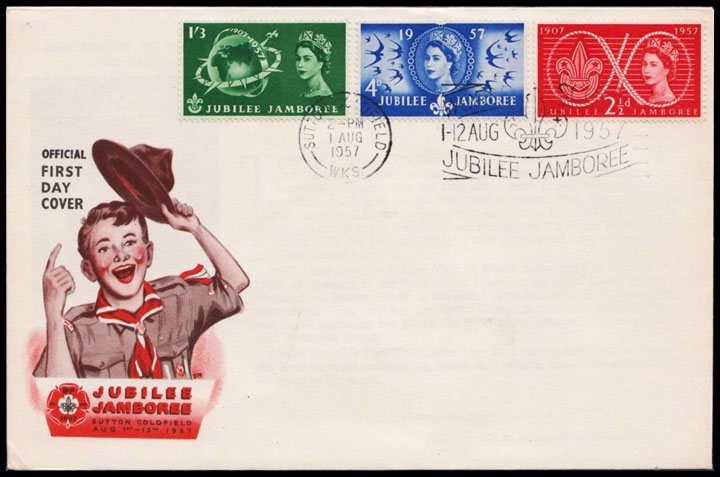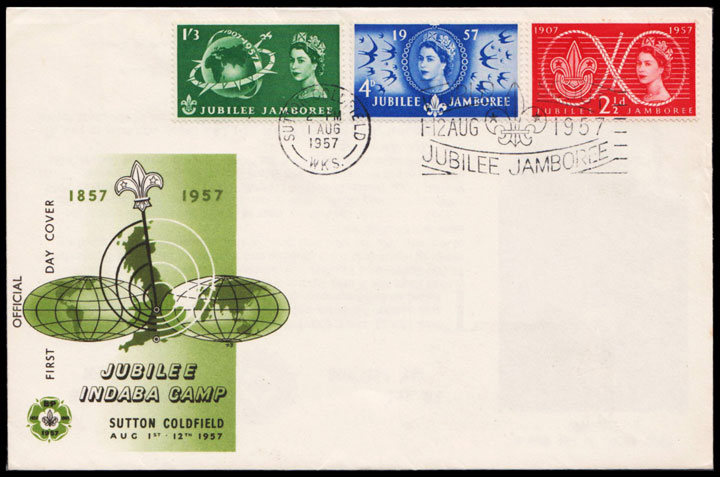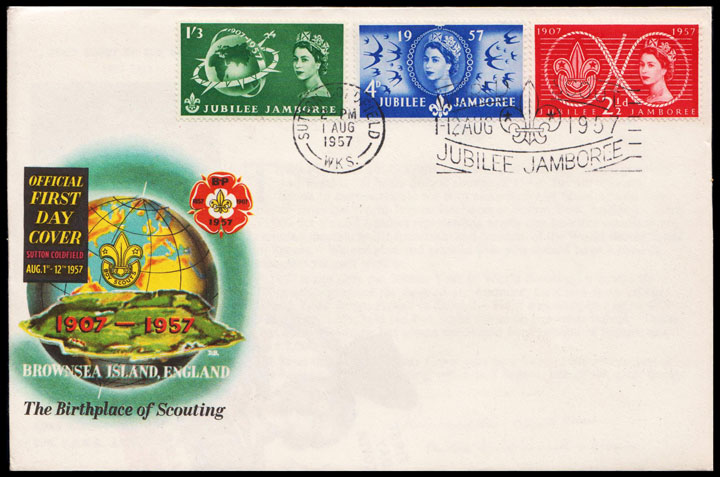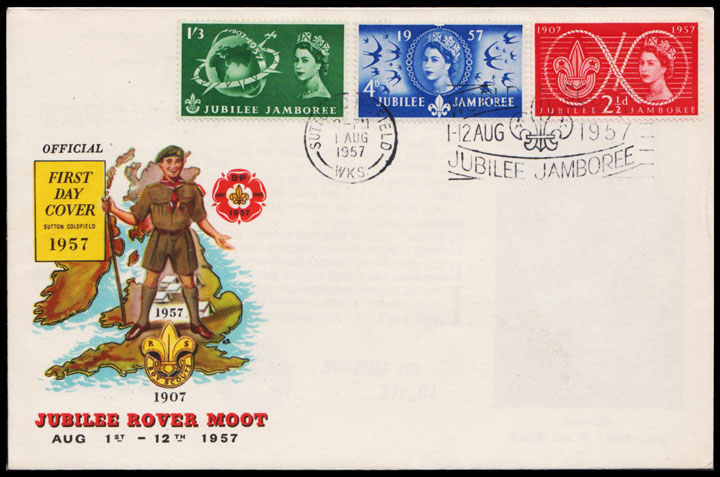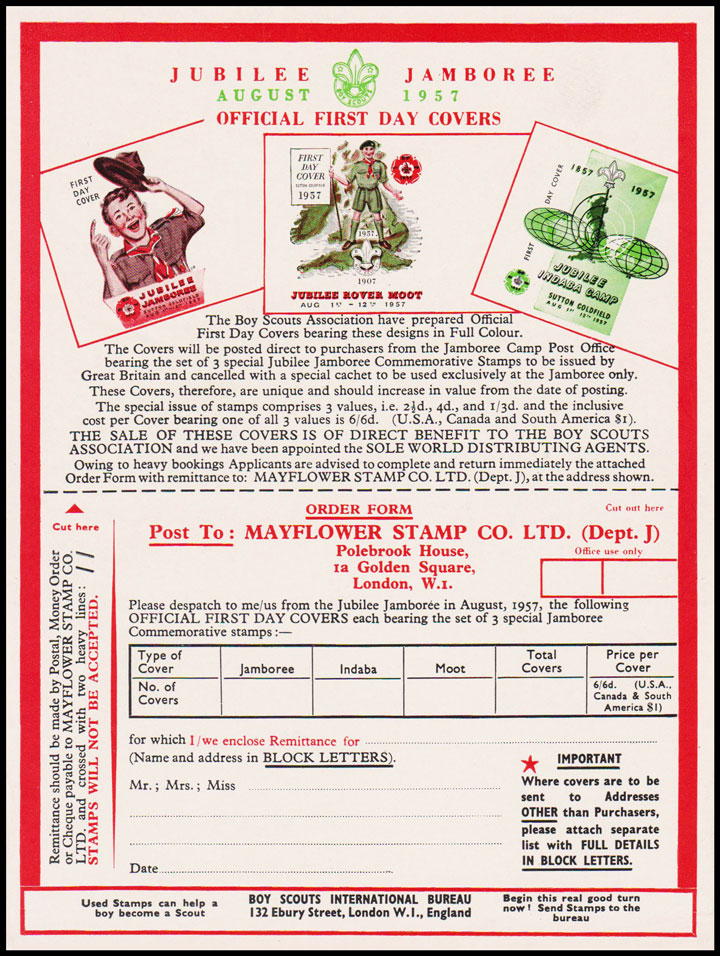
Large rolls of 4,800 stamps of the Boy Scout Jubilee Jamboree issue were produced for automatic application to First Day Covers on 1 Aug 1957. Stamps were applied by Vacuumatic affixing machines housed at Sutton Park Station, just east of Sutton Park, Sutton Coldfield where the Jamboree was held. Complete rolls were put on sale at the London Chief Office.
| — | 2½d | 4,800 | £50 | Lower End | Buff | c |
| — | 4d | 4,800 | £80 | Lower End | Buff | c |
| — | 1/3 | 4,800 | £300 | Lower End | Buff | c |
Leaders were 20″ long, and perforated gauge 11 at the right:
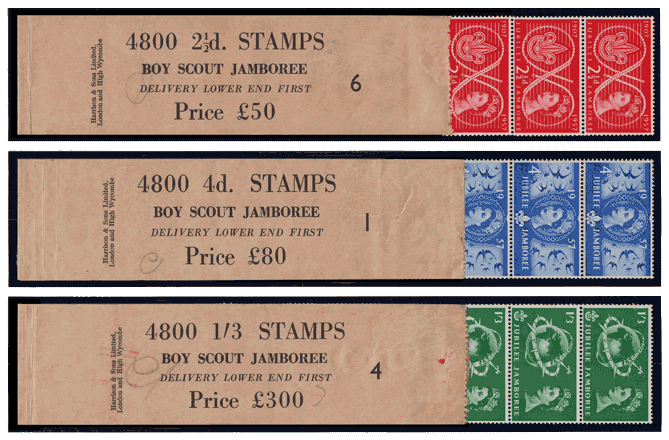
Due to lack of demand for these large rolls some were remade into small rolls. Out of about 500 rolls of each value, only about 20 were sold, including 14 used for FDCs. One hundred small rolls of each value were made and put on sale at the London Chief Office on 2 Sept 1957. Less than half of these were sold.
| — | 2½d | 480 | £5 | Lower End | Buff | c |
| — | 4d | 480 | £8 | Lower End | Buff | c |
| — | 1/3 | 240 | £15 | Lower End | Buff | c |
Leaders were under 10″ long, and rouletted at the right:
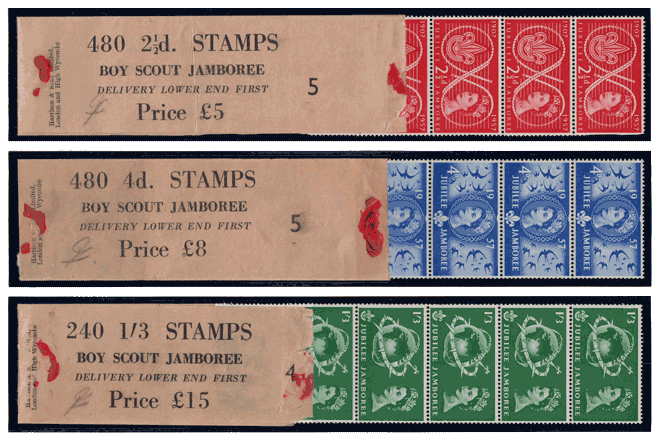
10″ tail papers were used to make the core. Those below are displayed folded at the right. The rouletting indicates these were from small rolls:
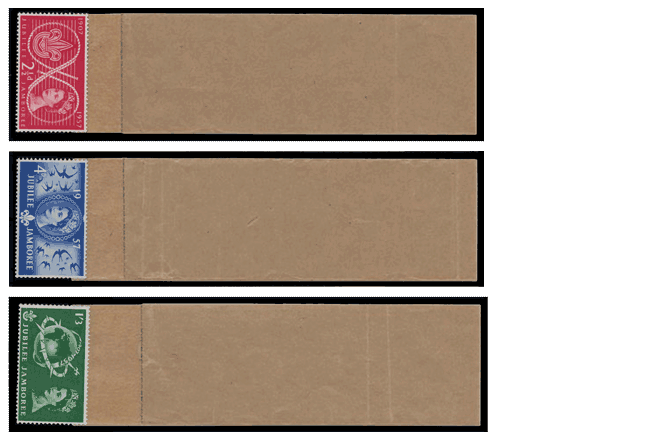
| 2½d | 4d | 1/3 | |
|---|---|---|---|
| Large Rolls Ordered | 560 | 560 | 560 |
| Supplied | 497 | 490 | 487 |
| Sold | 23 | 21 | 20 |
| Converted to Small Rolls | 10 | 10 | 5 |
| Small Rolls | 100 | 100 | 100 |
| Sold | 49 | 37 | 33 |
Both large and small rolls were withdrawn on 11 Sept 1957.
First Day Covers
The Post Office saw the potential for First Day Covers and met with the Boy Scouts and the Mayflower Stamp Co in October 1956 (Mayflower had been appointed as the sole distributing agent). It was decided to issue the stamps in rolls which could be automatically applied to covers by Vacuumatic affixing machines. Test rolls were needed to get the process up and running. Although 25 rolls of 4,800 test stamps were ordered, only a small number of covers are known with test stamps applied as most were destroyed.
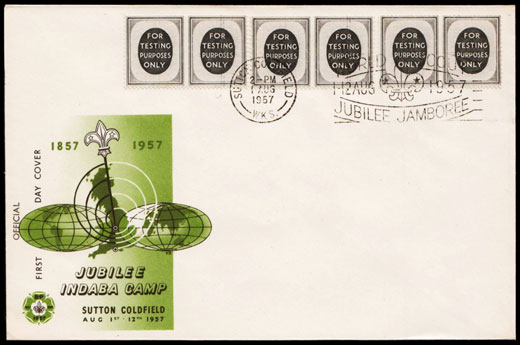
FDCs offered by Mayflower were:
Jubilee Jamboree (gathering of scouts);
Jubilee Rover Moot (gathering of Rover scouts);
Jubilee Indaba Camp (gathering of scout leaders);
Brownsea Island (the first scout camp).
The Mayflower Stamp Co Ltd (London) published an order form listing the first three of these, priced at 6/6d per cover (a good profit as the Post Office charged Mayflower 2/- per cover). A series of adverts in Boys’ Life by the Mayflower Stamp Co Inc (New York) offered the Jamboree, Indaba, and Brownsea FDCs at $1 each (the exchange rate at the time was 2.78, so approximately 7/- per cover). It is thought that Rover Moot was replaced by Brownsea Island in the USA as the Boy Scouts of America did not have a Rover programme.
Click the images to enlarge.
Next: Graphite Lines
